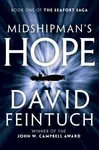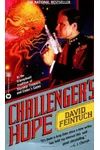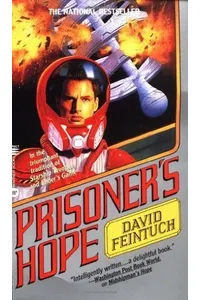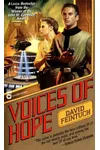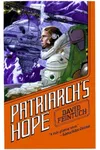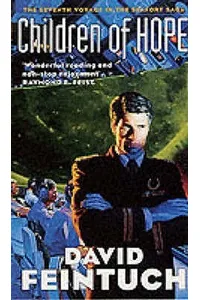Step into the starlit cosmos of the Nicholas Seafort series, where a young naval officer battles aliens, mutiny, and his own conscience in a gripping military sci-fi saga! Penned by David Feintuch, this seven-book epic blends heart-pounding space opera with soul-searching moral dilemmas, following Nicholas Ewing Seafort from a nervous midshipman to a burdened commander in a theocratic 22nd-century universe.
With its Hornblower-inspired hero and unflinching exploration of duty, the Seafort Saga invites readers to navigate the perils of interstellar leadership. Ready to board the UNS Hibernia and discover why fans adore this cult classic? Let’s dive in!
How Nicholas Seafort Began
David Feintuch, a lawyer-turned-author, launched the Seafort Saga in 1994 with Midshipman’s Hope, drawing heavily from C.S. Forester’s Horatio Hornblower novels. Feintuch’s vision was to transplant the naval hero’s grit and self-doubt into a futuristic United Nations Naval Service (UNNS), set in a Christian-dominated society. His late start in writing didn’t stop him from winning the 1996 John W. Campbell Award for Best New Writer, cementing his place in sci-fi.
Feintuch crafted Nicholas Seafort as a complex figure—dutiful yet tormented—whose journey resonated with readers craving introspective space adventures. Sadly, Feintuch’s death in 2006 left an eighth book, Galahad’s Hope, unpublished, but the saga’s seven novels remain a beloved niche gem.
The Heart of Nicholas Seafort
The series kicks off with Midshipman’s Hope (1994), where 17-year-old Nicholas Seafort inherits command of the UNS Hibernia after a tragic accident kills senior officers. Facing mutiny and a damaged ship, he must guide 300 souls to Hope Nation. Challenger’s Hope (1995) sees Seafort commanding a new ship, only to confront betrayal and deadly alien ‘Fish.’ Prisoner’s Hope (1995) pits him against rebels on Hope Nation, while Fisherman’s Hope (1996) places him at the Naval Academy, battling alien attacks and personal demons.
Themes of duty, sacrifice, and faith weave through the saga’s fabric. Seafort’s rigid adherence to honor often costs him dearly, making him a compelling study in leadership’s burdens. The setting—a theocratic, stratified society—mirrors real-world tensions, while the Fish aliens add an eerie external threat. Feintuch’s prose, though occasionally grim, captivates with emotional depth and fast-paced action, earning praise for its Hornblower-esque naval flair.
Unlike flashier sci-fi, the Seafort Saga leans into character-driven storytelling. Nicholas’s self-doubt and moral wrestling set it apart from swashbuckling space operas, offering a reflective take on heroism that feels both timeless and unique.
Why Nicholas Seafort Resonates
The Seafort Saga carved a niche in military sci-fi by blending naval tradition with futuristic stakes, influencing fans and writers who crave introspective heroes. Its cult status thrives on reader loyalty—some reread the series annually, drawn to Nicholas’s heartbreaking resolve. Though not a mainstream blockbuster, its impact lies in its emotional authenticity, tackling universal questions of duty and morality.
Feintuch’s death halted the saga’s expansion, but its legacy endures in online forums and rare used bookstores, where fans champion its understated brilliance. The 2015 attempt to crowdfund a Midshipman’s Hope film adaptation, though unsuccessful, underscores its lingering devotion.
- Publication Span: 1994–2001
- Books: Seven, from Midshipman’s Hope to Children of Hope
- Award: David Feintuch won the 1996 John W. Campbell Award
- Inspiration: C.S. Forester’s Horatio Hornblower series
Grab Midshipman’s Hope and blast off into Nicholas Seafort’s thrilling, soul-stirring universe! Whether you’re a sci-fi veteran or a curious newcomer, this saga’s blend of action and heart will keep you hooked.
